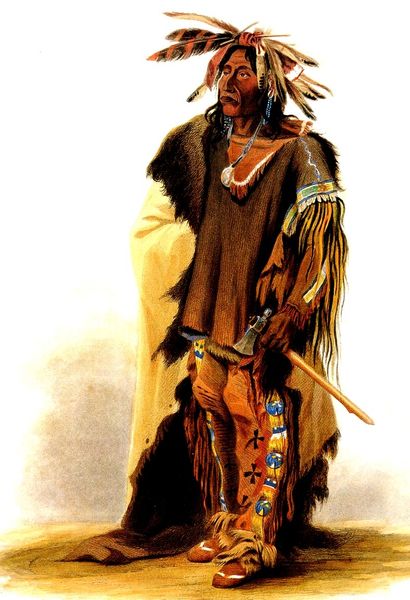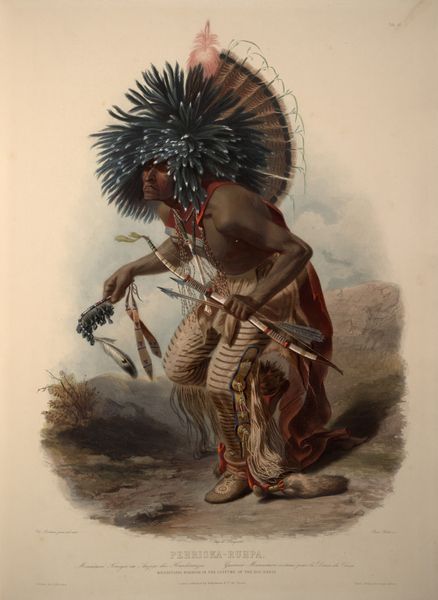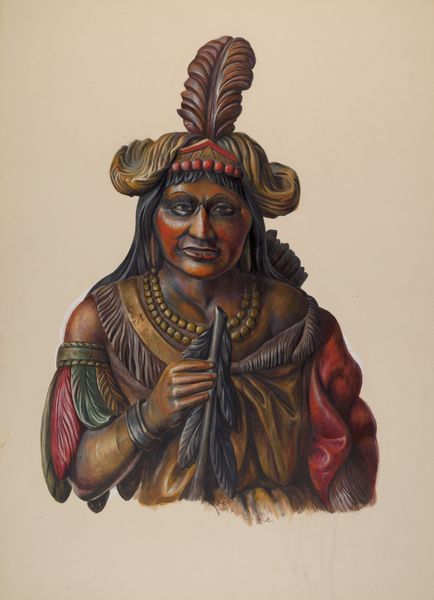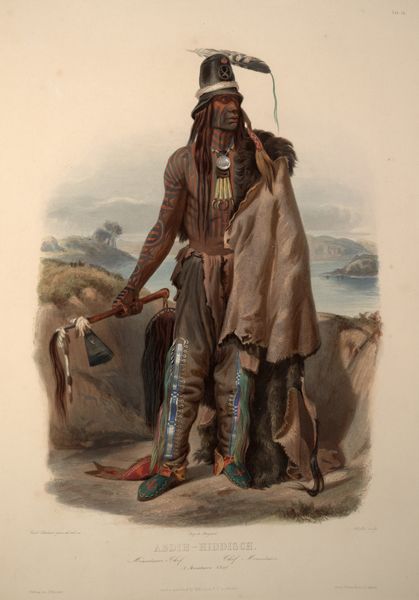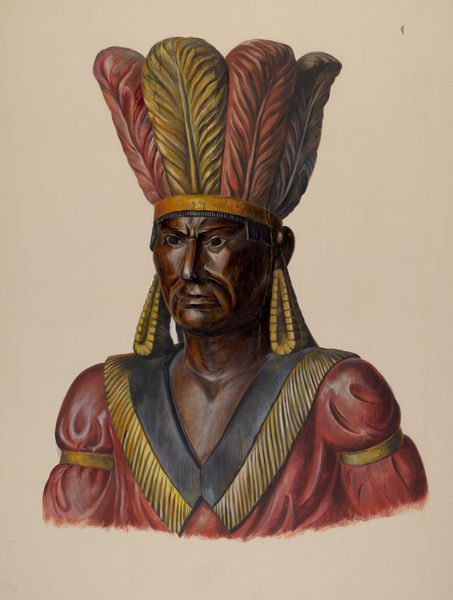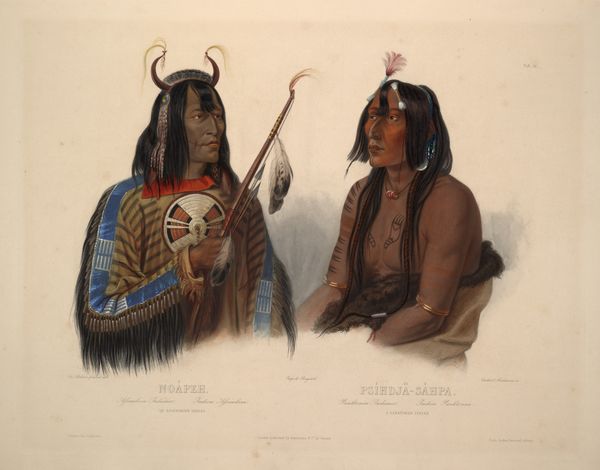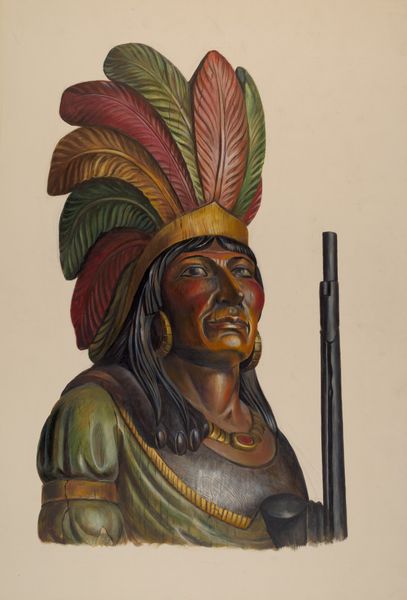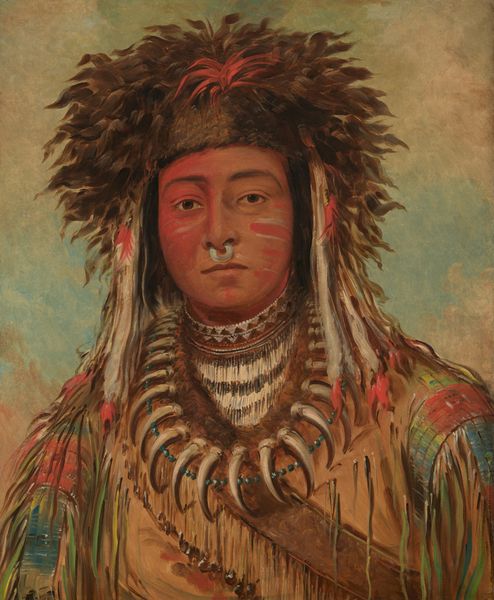
Wahk-Ta-Ge-Li, a Sioux Warrior, plate 8 from Volume 2 of 'Travels in the Interior of North America' 1844
0:00
0:00
karlbodmer
Private Collection
drawing, paper
#
portrait
#
drawing
#
figuration
#
paper
#
watercolour illustration
Copyright: Public domain
Curator: Take a look at this portrait titled, "Wahk-Ta-Ge-Li, a Sioux Warrior." It is plate 8 from Volume 2 of 'Travels in the Interior of North America' created in 1844 by Karl Bodmer, using watercolor. What strikes you initially? Editor: The figure stands boldly, rendered with meticulous attention to detail. Note the artist's strategic use of color – earthy browns juxtaposed with brilliant blues and reds on the garments and leggings. Curator: Bodmer was commissioned to document the American West, which led him to travel and depict Indigenous people. Examining this as a document of its time, consider that it was part of creating a record of what settlers perceived to be a vanishing way of life. Editor: And how were these works consumed? Looking at his garments— the hide, fur, and the adornments; were they items he fashioned, bartered, or were given? It all underscores the complex system of exchange and colonial dynamics. Curator: Precisely. The very act of representation—how Bodmer chose to portray Wahk-Ta-Ge-Li, what aspects he emphasized—speaks volumes about the artist's, and indeed European culture’s, perspective and the social forces at play in constructing this image. His direct gaze and posture convey a sense of strength. Editor: True. Observe the textures rendered, the contrast between soft fur and patterned embroidery on the leggings. Consider too how Bodmer captures a fleeting moment of lived experience, but frames it within a static form, elevating the subject, and yet somewhat detached, don’t you think? Curator: That detachment, while perhaps a product of its time, prompts critical reflection on representation itself, whose power is embedded within this artistic construction of Wahk-Ta-Ge-Li. The value comes from thinking about the political economy and the materials required to produce the work, a portrait for consumption, if you will. Editor: Well put. Thinking through it myself I found the artwork technically skilled and imbued with certain formality that belies the rawness of the era's colonial encounters. Curator: Ultimately, exploring artwork like Bodmer’s reminds us that artistic creation is intrinsically linked with both material realities and social narrative. Editor: A necessary reminder. Looking again, the work’s visual impact arises from calculated construction to produce that impact.
Comments
No comments
Be the first to comment and join the conversation on the ultimate creative platform.

